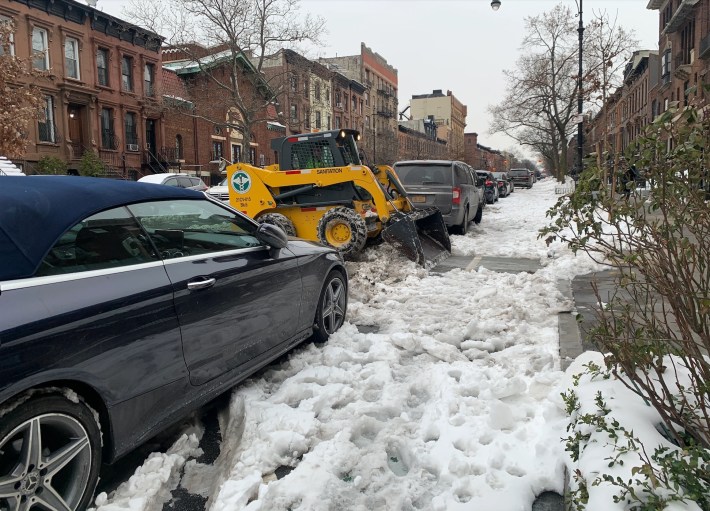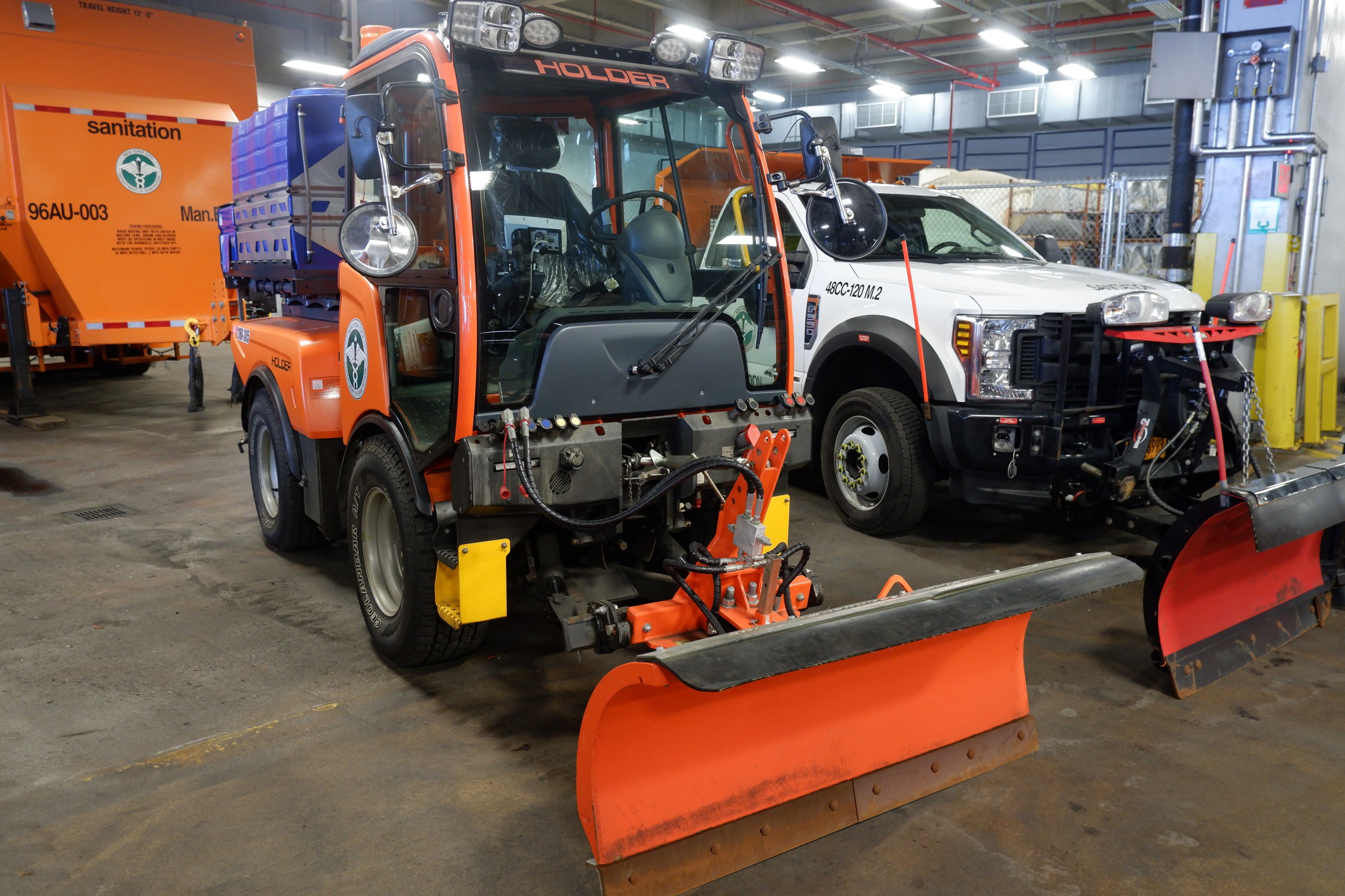New York's Strongest are gearing up to clear bike lanes of snow this winter — but they must still wait for car lanes first.
The Department of Sanitation is boosting its small fleet of bike lane snow plows by more than half this winter, but the agency continues to prioritize car lanes before moving on to the protected paths.
Sanitation has been testing out the narrower snow-removal machines for the past two years, after agency honchos had to apologize in 2020 for not clearing the lanes, admitting that they were not keeping pace with the increase in bicycle lanes across the city and the boom in biking amid the pandemic.
DSNY currently leases 30 of the Holder vehicles and plans to replace those by buying 47 of the tiny tractors by the end of this snow season, which typically runs from now through April.
The agency's official annual snow plan — just as in prior years — says that DSNY will clear bike lanes after its workers are finished with car lanes, citing the need to clear the road for emergency services. But the agency's snow chief told Streetsblog on Tuesday that workers can start clearing some bike lanes at the same time as car lanes ... if there's a full staff.
"If we are well staffed, no outages … we can run some of these [bike] routes simultaneously, but still the priority will remain on the streets, and then once we complete all schedules we’ll move into the bike lanes," said Assistant Chief Christian Hourihan.
"But I’ll never do that if I’m short in plowing the streets," he added, "because, you know, we leave an area undone and there’s an accident and we moved on to something like that first it’s more dangerous, or God forbid, an ambulance doesn’t get through, or a fire truck has some delay. It just has to be that way."
When Streetsblog asked whether some of the city's widest roadways like Queens Boulevard could do with just a couple of lanes cleared before moving on to bike paths, Hourihan said his workers need to do the entire street first.
"I get what you’re saying, but no, we have to open up the streets, that’s first priority," he said.
The agency usually has enough staff over the winter to do the bike lanes at the same time, according to spokesman Joshua Goodman. But last season, the Omicron variant battered the Department with up to 28 percent of workers calling in sick.
This year, DSNY is heading into the snow season with more than 8,000 uniformed workers, the highest head count in about two decades, boosted by the city hiring hundreds more workers as part of Mayor Adams's recently announced cleanliness initiative and the Queens curbside organics collection program.
The bike path fleet is large enough to cover the 165 miles of protected lanes across the city, the agency said, and DSNY plans to add more as the Department of Transportation grows its network of green-painted paths.

Sanitation uses the vehicles to brine the bike lanes beforehand, making it easier to clear the snow, and officials also began mounting mechanical brushes over the spring to use them as street sweepers in narrower bike lanes this summer.
The agency also has 102 so-called skid steer machines to scoop snow from hard-to-reach areas, like bus stops and fire hydrants — but those vehicles take much longer to clear a bike lane.
The four dozen pint-sized vehicles pale in comparison to the 2,200 white collection trucks Sanitation repurposes as snow plows to clear the Big Apple's streets and avenues, but agency Commissioner Jessica Tisch acknowledged the need to clear lanes for commuters and delivery workers who rely on them.
"During snow, our first mission is to clear a way for emergency vehicles, but we do know how important it is to clear bike lanes for people to be able to get to work and for people who do their work in them, like deliveristas," Tisch said during the Department's yearly media tour of snow-fighting machinery at its Spring Street garage in downtown Manhattan, an event it dubbed a "Snow and Tell."






